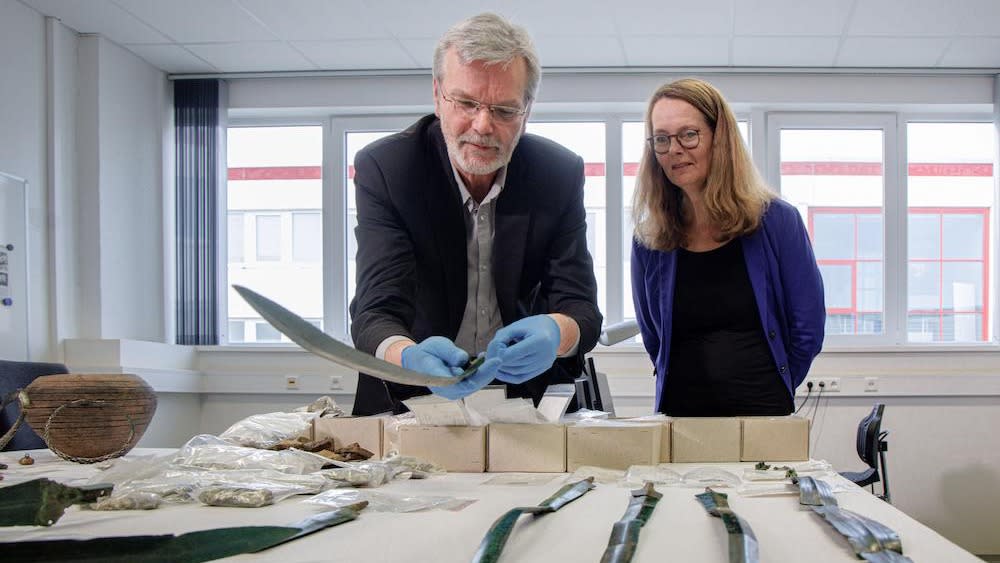Nearly 8,000 medieval coins and 7 Bronze Age swords unearthed in Germany

A bounty of centuries-old artifacts in Germany — including seven swords, thousands of silver coins, jewelry and pottery — were unearthed by a group of volunteer conservationists.
The excavators discovered the items last year at three separate locations dotting the German countryside, according to a translated statement.
Officials from Germany's State Office for Culture and Monument Preservation presented the findings Nov. 22.
Related: Stash of 'eye-catching' Bronze Age jewelry discovered by metal detectorist in Swiss carrot field
The first discovery, made near the town of Mirow in northern Germany, contained fragments of seven 3,000-year-old swords dating to the Bronze Age. Archaeologists think the weaponry may have been placed there as a sacrificial offering and that later dredging caused the swords to break into pieces. However, they were able to piece the artifacts back together.
Conservationists unearthed the second finding, nearly 6,000 medieval silver coins, in Rügen, a German island about 120 miles (200 kilometers) north of Mirow. Most of the centuries-old coins were packed inside a clay pot, but many were scattered in the soil. Although the majority of the coins were minted in western Germany, archaeologists noticed that around 10% came from England, Denmark, Bohemia (in what is now the Czech Republic) and Hungary, suggesting possible trade relationships in the area. Researchers deemed the collection the largest Slavic coin hoard from the 11th century.
The final discovery was made in the town of Mölln, in northern Germany. It contained a variety of items, also from the 11th century, including a pot holding 1,700 coins; a pearl necklace made of gold, rock crystal and carnelian (quartz) beads; finger and neck rings; and two reliquary containers. The first container was shaped like a "kaptorga" — a flat, metal pendant typically worn around the neck — while the second was inspired by a crucifix. Archaeologists think the containers were evidence of Christianity's influence in the area at that time.
RELATED STORIES
—'Very rare' Bronze Age arrow with quartzite tip uncovered from melting ice after 3,000 years
—'Octagonal' sword from Bronze Age burial in Germany is so well preserved, it shines
—2,000-year-old coin stash discovered at ancient Buddhist shrine in Pakistan
Officials thanked the volunteers for the trio of discoveries during the presentation.
"[Volunteers] are indispensable for preserving our cultural heritage," Bettina Martin, Germany's minister of science, culture, federal and European affairs, said in the statement. "We also have the volunteer conservationists to thank for the three outstanding finds."
Editor's Note: This story was updated at 9:00 a.m. E.D.T. to note in one subheading that the swords were from the Bronze Age while the coins were medieval.

